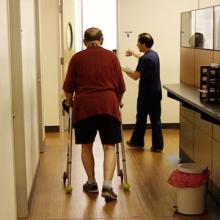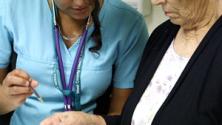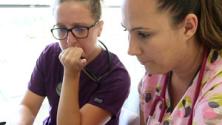What is the challenge?
Patients with more complicated physical and/or mental illnesses are at increased risk of potentially serious, even fatal, exacerbations and complications. They may benefit from more intensive follow-up and management than can be done through repeated office visits. Many patients being discharged from the hospital or Emergency Department fit this description. Evidence suggests that well-organized care management by a nurse or other health professional can reduce patients' risk of deterioration and readmission, and the associated health care costs. One-half of patients readmitted to hospitals within 30 days of discharge have not seen a community provider.
What needs to change?
Primary care practices should try to establish a care management program with the following characteristics:
- RNs serve primarily as care managers complemented by social workers if available.
- Care managers are integrated with primary provider, team, and the Electronic Health Record.
- Proven strategies for identifying potentially appropriate patients.
- Trained nurses who can provide clinical monitoring, oversight of drug therapy, and self-management support.
- Regular follow-up with patients that includes some face-to-face contact.
- Regular review of care-managed patients with clinical experts.
What do we gain by making these changes?
With effective care management, your practice can improve disease control and self-management, reduce distress, prevent admissions or readmissions, and improve the coordination of care for more complex patients. Care management contributes significantly to a practice’s ability to reduce total costs of care.
- Think about care management as a program, not a person.
Patients with a wide variety of clinical and behavioral problems may benefit from care management. Patients with mental health problems and/or social and economic challenges may also benefit from case management services from a social worker. Less complicated patients needing only closer monitoring can be followed effectively by a trained MA or lay person using a protocol and supported by a health professional.
- Shift RN roles toward care management.
RNs have become much less common in primary care practice settings. But many still spend much of their day fielding incoming phone calls and giving injections. Many LEAP practices are finding different ways to manage phone calls (see communication management module) and injections to free up RN time for care management. Additional training may be necessary for some RNs to play this new role.
- Decide which patients to refer to care management.
Most care management programs target patients with high costs and/or high utilization, and many use computerized risk prediction algorithms to identify candidates. Others focus on patients being discharged from the hospital or patients referred by providers in the practice. The practice should be clear which patients it wants to target, but payers generally expect total cost reduction through reduced hospitalizations and Emergency Department (ED) visits.
- Establish relationships with key hospital(s) to identify and co-manage patients discharged from the hospital.
To effectively support patients through transitions, practices need to know as soon as possible when their patients are seen in the ED or hospitalized. This often requires that the practice initiates conversations with hospital/ED administrators and care management staff to ensure early notification and coordination of post-discharge care.
- Create protocols, standing orders, and standard work flows.
Just giving a nurse a list of high-risk patients to call is unlikely to improve outcomes. Effective care management programs are guided by explicit protocols that describe:
- Expected size of case load.
- Frequency, modes, and duration of patient contact.
- Use of assessments.
- Role in medication management (see Medication Management topic).
- Interactions with patient’s primary care provider and team.
- Documentation in the Electronic Health Record and elsewhere.
- Discharging patients from care management.
- Make sure care managers have protected time to do their work.
To ensure that a care management program is effective, it’s important to create protected time for nurses or other care management staff. If they get pulled away to cover the phones or do a dressing change, the essential work of care management will not get done. Having leadership support for protected time is essential.
- Develop a support structure for care managers.
Most successful care management programs ensure that nurses regularly review their cases with relevant clinical experts. This could be with a multi-disciplinary team that includes a provider or other clinician, social worker, behavioral health specialist, clinical pharmacist, or others. Or the practice can designate a consulting clinician (other than the primary care provider) for this role. In addition, nurse care managers have major documentation and administrative burdens and often need help meeting their patients’ social needs. In response, several LEAP sites have linked nurse care managers with MAs, administrative staff, or social workers.
Publications
ToolkitsImplementation guides and other documents with extensive resources included
Role featuresJob descriptions, career ladders and other HR materials
Webinar and power point presentations
Staff trainingTutorials, training manuals, etc.
Clinical protocolStanding orders, risk stratification forms and hospital transition protocols
WorkflowTemplates, flow sheets and mapping aids
If you have a question about the improvements, action steps, or tools & resources in this module please let us know. We're here to help. And if we can't answer your question, we can probably connect you with someone who can.











